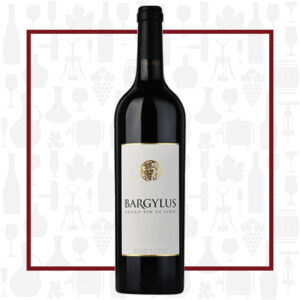Cellar Profile
Organic, minimal intervention from the only winery in Syria. Situated atop the Jabal al-Ansariyeh (its ancient name was Mt. Bargylus), outside the port city of Latakia, the vines are planted in a mix of limestone, flint and clay. Enjoying a Mediterranean climate, the winds off the nearby sea, along with the 900m elevation lead to large diurnal shifts between day and night during the growing season. The vines are densely planted, but low-yielding, netting only a kg. Of grapes per vine. Hand harvested, and meticulously sorted, the reds see 14 months in French oak barriques (20% new), while the whites are aged in stainless steel, with 3 months of lees contact. The wines are aged for a minimum of 48 months in bottle before being released. Miniscule, intensely difficult production of high-quality wines.
Region
Latakia is currently the only region in Syria that has an active operational winery. The internecine civil war has, unfortunately, curtailed any kind of investment in the region, despite its ability to grow extremely high quality grapes. Latakia sits on Syria’s coastal mountain range, in close proximity to the Mediterranean Sea, which provides cooling daytime breezes, essential during the heat of summer. The mountains are rich with deposits of limestone and flint, ideal for the cultivation of vitis vinifera, and the altitude (900 masl) ensures large diurnal shifts between the day and evening, cooling the grapes and slowing sugar production, to ensure full ripening of the skins and complexity of flavour in the finished wines.
Vineyard
Sitting atop the Jabal al-Ansariyeh mountain, Domaine Bargylus’ vineyard is maintained organically, with little to no intervention. The base of limestone underneath clay and deposits of flint are ideal for growing the Bordelaise grapes. Though the days during the growing season can be quite hot, the winds blowing off the sea cool the grapes, as do extremely cool evenings.
Varieties
Syrah was found to be the offspring of two obscure grapes from southeastern France, Dureza and Mondeuse Blanche. The style and flavour profile of Syrah is greatly influenced by the climate in which the grapes are grown. Moderate climates, such as the northern Rhône Valley, tend to produce medium- to full-bodied wines with medium to high levels of tannins and notes of blackberry, mint and black pepper. In hot climates, Syrah is more consistently full-bodied, with softer tannin, jammier fruit and spice notes of licorice, anise and earthy leather. Cabernet Sauvignon is probably the most famous red wine grape variety on earth and has successfully spread to almost every wine growing country. With small berries and thick skins, it adds tannic structure, colour and acidity to blends. Known for being soft, ripe and elegant, most Merlots are easy-drinking reds that go well with food but can also be enjoyed on their own. Merlot will help soften a wine that is too astringent or tannic, but can be quite structured on its own. It is a natural blending partner with Cabernet Sauvignon, such as in its ancestral home, Bordeaux.
Winemaking
The grapes are hand-harvested and carefully double-sorted, extracting any berries that are flawed, before gentle crushing. Using only gravity flows, the wine is punched down by hand during maceration. It is then transferred to a combination of new and used French oak barriques for malolactic fermentation and elevage. The wine rests for 14 months before being bottled, unfined and unfiltered, where it goes through an additional four years of aging before release.
Tasting Notes
Aromas of blackberry, cassis, menthol and bramble. Full-bodied and rich, the tannins are evolved and silky. Plum, white pepper, baking spice, kirsch and black cherry are framed by a surprising tingle of acids. Drinking elegantly now, it will reward further cellaring with the evolution of tertiary notes. Serve this with rack of lamb or braised beef.

 info@buyersandcellars.ca
www.buyersandcellars.ca
info@buyersandcellars.ca
www.buyersandcellars.ca